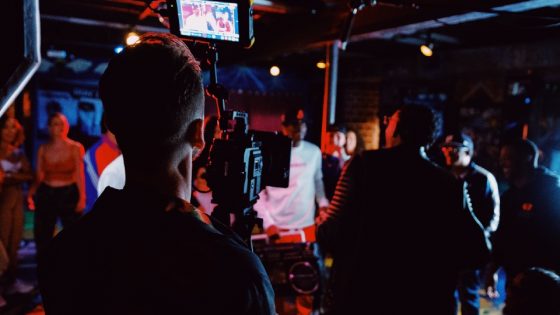The pressure on media outlets to rapidly get good quality footage to support global news stories has never been greater. Understaffed news rooms are rushing to beat the competition – not just the vast number of global online, print, radio and television media but also the factories dedicated to creating fake news stories that are propagated through social media.
As trusted organisations, NGOs play a vital role in providing a news hungry global audience with fast access to verifiable footage. The challenges, however, are significant. Every day of the year, video content taken in the field, often at great risk, must be available within minutes in a ‘media ready’ format to support hard pushed journalists. It must be vetted to ensure the messaging is neutral and individual identify is safeguarded. It must be secure and continuously accessible to subscribers despite constant and escalating attacks from cyber criminals. And it must be trackable to provide the NGO with information to support funding and enable continuous improvement of the media content strategy.
Guy Parry-Williams, Managing Director, Imedia8, explains why NGOs that embrace a better, faster, more secure and trackable way to manage the end to end content production and management process will play an ever more significant role in turning the tide on fake news, reinforcing their credentials and boosting awareness in the process…
News Confusion
The concept of ‘news’ has become tarnished and confused over the past few years. Fear and panic fuelled by the global pandemic, the war in Ukraine as well as global financial meltdown have escalated demand for immediate information. The problem is that immediacy now takes precedence over accuracy in far too many cases.
A news hungry audience is never without a device, but individuals lack discrimination – indeed many people struggle to distinguish fact from fiction. As Ofcom researchreveals, every minute sees 500 hours of content uploaded to YouTube, 5,000 videos viewed on TikTok and 695,000 stories shared on Instagram and more than a third of internet users are unaware that online content might be false or biased. With highly organised factories dedicated to creating fake news, backed up by video footage, it has never been more important for trusted organisations to step up and provide a global audience with trusted information.
With media outlets operating on far smaller staff numbers than in the past, journalists need support. NGOs such as the Red Cross and United Nations, play a valuable role in capturing and sharing video footage of their activity in the field – from war zones to natural disasters. Ensuring this content is ‘journalist ready’ makes all the difference. By providing not just the video but the full edited story, with transcripts, an NGO will reinforce its credential as not just a trusted source but also a ‘go to’ destination for the media.
Time Pressure
High quality mobile phones and ever increasing cellular coverage have transformed accessibility, enabling NGO staff on the ground to capture video content and reducing the need for dedicated camera crews. Getting this footage from staff on the ground back to HQ and into the right format to be shared with media outlets can take days, however. Given the immediacy of the news agenda, such delays will often mean the opportunity has been lost.
But there are no shortcuts – this is often highly sensitive information. NGOs must ensure the messaging is neutral, especially during conflict where it is vital to avoid any political affiliation. It must also remain anonymous: it is essential that individuals, including those who work for the NGO, are not exposed to any risk as a result of the coverage.
This is hugely challenging. The process is far more demanding than simply uploading to a video content platform. Content needs to be verified to confirm messaging and avoid any referenceable names. It needs to be presented to the media in a way that is immediately usable: including the presentation of a lightweight preview, as well as associated photos, graphics, infographics and story content. Plus, it needs to be watermarked to enable the NGO to track the take up and usage of each piece of content across the world. Only then can it be uploaded to a site, and the global media outlet subscribers informed the latest content is available.
Feedback Loop
Achieving this in a timely fashion is tough for any individual organisation without round the clock staff. What happens if the story breaks on a weekend or Bank Holiday, over a religious festival or during the August holiday escape? Miss a deadline and the story will never get picked up; take a short cut, and the essential neutrality of the content could be compromised.
With the right, managed service approach every aspect of this process can be achieved in as little as 20 minutes, ensuring the NGO maximises the value of time sensitive information. It is, however, also important to time the content upload to maximise global exposure. Using intelligent planning to ensure the content timing reflects the likely audience and country/ continent specific news cycles will increase the uptake by media outlets. In addition, reports based on continual monitoring of content usage can provide vital insight to NGOs to inform the video content strategy.
Tracking subscriptions demonstrates who is watching and when, highlighting any news outlets that have looked at but failed to use the content. This information will help NGOs to understand the evolving news landscape and timescales, including the way media outlets want to consume content, providing a complete feedback loop and enabling a continual evolution of the content strategy.
Conclusion
Video content also plays a vital role in supporting future activity. With governments and high value donors facing escalating demands for support and the challenges of an inflationary economy, funding activity is key. For most NGOs there is a direct link between the amount of footage achieved across global news stations and income – content usage reports give NGOs with important evidence about both on the ground activity and the role played in improving awareness and understanding among the general public.
Plus, of course, some of this footage will have long term value. With an archive of footage stretching back over years, NGOs provide academics as well as media outlets with access to a valuable, deep resource.
Indeed, with a light touch subscription model, anyone in the world can access this resource, improving the quality of verified information in the public domain. And that is key: with a trackable archive of carefully curated, verified video content, an NGO can maximise public awareness and understanding while also leading the fight against the fake news factories.




